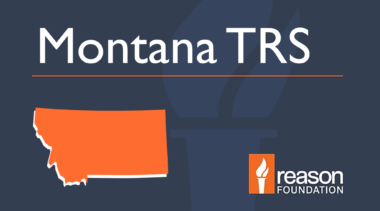Jen Sidorova is a policy analyst at Reason Foundation.
Her areas of expertise include technology policy, pension reform, recruitment and retention of public sector employees, and housing regulation.
Sidorova's work has been published in the Buffalo News, Governing and Fox News, The Washington Times, Orange County Register, The Atlanta Journal-Constitution, NJ.com,
Jen's recent academic work has been presented at panels at the 45th APPAM Fall Research Conference, The 2024 Workshop on the Economics of Information Security (WEIS), as well as the International Studies Association 2024 Annual Convention.
Her recent chapter on "Military cybercapacity: measures, drivers and effects" was published in the Research Handbook of Cyberwarfare.
Her policy analysis has been featured by Equable, Carolina Journal, The Foundation for Economic Education, and Georgia Public Policy Foundation.
Her latest film on rent regulation, “Shabbification: The Story of Rent Control," is featured at the Anthem Film Festival in Las Vegas.
Sidorova holds Master of Arts degrees in economics and political science from Stony Brook University. She is an alumnus of the Oskar Morgenstern Fellowship at the Mercatus Center, as well as the Cybersecurity Summer Institute at Georgia Tech.
-
Consent requirements in comprehensive data privacy laws: Current practices and the path forward
Privacy laws worldwide increasingly rely on user consent as the primary mechanism for governing data collection, processing, and sharing.
-
Rent control implications and policy alternatives
Seven states currently have rent control laws, and 20 states introduced bills related to rent control in 2024.
-
Best practices for pension debt amortization
Amortization policy is at the core of the successful elimination of pension debt.
-
Working Paper: How shifting to a defined contribution retirement plan impacted teacher retention in Alaska
Using individual-level data for all Alaska teachers in the Teacher Retirement System before and after the retirement benefit change, we assess the effects of pension reform on teacher mobility out of employment with the Alaska K-12 system.
-
What Factors Impact Public Pension Reform?
This brief analyzes several different factors that impact the likelihood of state policymakers making changes to a pension plan.
-
Montana Public Employee Retirement System (MPERS) Pension Solvency Analysis
The Montana Public Employee Retirement System public pension plan is only 74 percent funded.
-
North Carolina Teachers & State Employees Retirement System Solvency Analysis
Investment performance falling short of return assumptions has been the largest contributor to the public pension plan's growing debt, adding $7.6 billion in unfunded liabilities since 2008.
-
Mississippi Public Employees’ Retirement System Solvency Analysis
Underperforming investment returns have been the biggest contributor to the growing unfunded liability, adding $6.8 billion in debt to the system since 2001.
-
North Carolina Teachers’ and State Employees’ Retirement System: A Pension Solvency Analysis
Better risk management and more realistic plan assumptions can help ensure the state delivers the promised retirement benefits to its employees.










